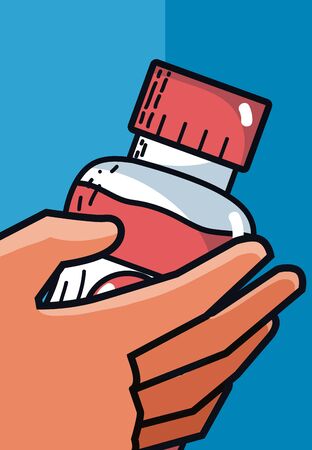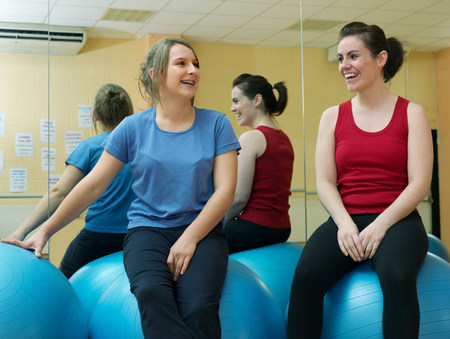Introduction to Hydration in Rehabilitation
Hydration is a fundamental aspect of patient care within rehabilitation settings, yet it is often underestimated in its impact on recovery outcomes. In the UK, where clinical guidelines consistently emphasise person-centred care, ensuring optimal fluid balance has become an integral part of rehabilitation protocols across NHS and private healthcare facilities alike. Adequate hydration supports physiological functions vital to healing and mobility, such as circulation, thermoregulation, cognitive function, and tissue repair. For patients navigating the challenges of post-acute illness, injury, or surgery, maintaining appropriate hydration can influence everything from energy levels and medication efficacy to susceptibility to complications like urinary tract infections or pressure ulcers. Recognising these connections, UK healthcare professionals are increasingly attentive to individual hydration needs as part of holistic rehabilitation plans. This approach aligns with national policies promoting quality improvement, patient safety, and better long-term outcomes for diverse patient groups undergoing rehabilitation.
Hydration Challenges in Neurological Rehabilitation
Neurological rehabilitation often involves patients recovering from conditions such as stroke, traumatic brain injury, or neurodegenerative diseases. These individuals present unique hydration challenges that can significantly influence their recovery process. Ensuring proper hydration is crucial, as dehydration may worsen cognitive deficits, increase the risk of complications such as urinary tract infections, and slow overall progress.
There are several specific factors that make hydration management particularly complex in this group:
| Challenge | Description | Potential Impact on Recovery |
|---|---|---|
| Dysphagia | Difficulty swallowing due to neurological impairment | Increases risk of aspiration; limits fluid intake options |
| Cognitive Impairment | Poor awareness of thirst or need to drink | Patients may forget to drink or be unable to communicate needs |
| Physical Limitations | Reduced mobility or motor control issues | Difficulty accessing drinks independently; reliance on carers |
| Bowel & Bladder Concerns | Incontinence or fear of accidents | Intentional restriction of fluid intake by patients or staff |
| Medication Side Effects | Certain drugs may increase fluid loss or decrease thirst sensation | Greater vigilance required to maintain balance |
Addressing these barriers requires a multidisciplinary approach. Speech and language therapists may recommend thickened fluids for those with dysphagia, while occupational therapists and nursing staff can help set up accessible drink stations or scheduled hydration routines. Education for both patients and carers is also vital—raising awareness about the signs of dehydration and emphasising the importance of regular fluid intake, even in the absence of thirst, is key. In UK care settings, it’s common practice to document daily fluid intake charts and use visual prompts to remind both staff and patients about hydration goals. Ultimately, tailored strategies are necessary to ensure safe and effective hydration support throughout neurological rehabilitation.

3. Hydration Considerations in Musculoskeletal Rehabilitation
When it comes to musculoskeletal rehabilitation, such as recovery from orthopaedic injuries or joint replacements, hydration plays a crucial yet often overlooked role. Patients undergoing these forms of rehabilitation are typically encouraged to gradually increase their physical activity levels as part of their recovery process. This increased activity can elevate fluid requirements, especially when combined with factors like pain management medications that may have diuretic effects or cause dry mouth.
It is common for patients recovering from surgeries—such as hip or knee replacements—to experience reduced mobility in the early stages of rehabilitation. This limited mobility can inadvertently lead to decreased thirst sensation and lower fluid intake. Furthermore, concerns about frequent trips to the toilet, particularly for those with restricted movement or at risk of falls, may prompt some patients to consciously limit their fluid consumption. This behaviour can increase the risk of dehydration, which in turn may slow tissue healing, contribute to muscle cramps, and exacerbate symptoms such as fatigue.
Healthcare professionals working within the NHS and private sector alike emphasise the importance of maintaining an adequate fluid balance during musculoskeletal rehabilitation. Individualised hydration strategies are recommended: these might include setting regular reminders for drinking water, using easily accessible water bottles with measurement markings, and offering support during therapy sessions to encourage gradual increases in intake. Additionally, monitoring urine colour remains a practical British guideline for assessing hydration status at home.
For patients who are older or taking multiple medications, the risks associated with both under- and over-hydration should be discussed as part of routine rehabilitation planning. Dietitians and physiotherapists often collaborate to ensure that hydration advice is tailored not only to the patient’s clinical condition but also to their living environment—whether they are returning home independently or receiving care in a residential facility.
In summary, ensuring proper hydration in musculoskeletal rehabilitation requires a thoughtful approach that addresses each patient’s physical limitations, medication profile, and personal preferences. With effective communication and practical strategies, patients can be supported to manage their fluid intake confidently throughout their rehabilitation journey.
4. Special Focus: Elderly Patients and Hydration
The hydration needs of elderly patients in UK rehabilitation facilities require particular attention due to physiological changes that occur with ageing, as well as the presence of chronic conditions and polypharmacy. Older adults are at an increased risk of dehydration for several reasons, including a diminished sense of thirst, reduced renal function, and mobility limitations that make it harder to access fluids independently. These challenges are further compounded in rehabilitation settings where patients may be recovering from surgeries, strokes, or other medical events.
Common Risks for Dehydration in Older Adults
| Risk Factor | Description |
|---|---|
| Diminished Thirst Sensation | Ageing reduces the body’s ability to recognise dehydration signals. |
| Reduced Mobility | Limited movement can prevent access to water sources without assistance. |
| Cognitive Impairment | Conditions like dementia may cause patients to forget to drink regularly. |
| Medication Side Effects | Diuretics and laxatives, commonly prescribed, increase fluid loss. |
| Chronic Illnesses | Heart failure, kidney disease, and diabetes alter fluid requirements and management strategies. |
Best Practices for Maintaining Hydration in UK Rehabilitation Facilities
- Regular Fluid Rounds: Schedule frequent water rounds throughout the day to prompt and assist older adults with drinking.
- Personalised Hydration Plans: Develop tailored plans that account for each patient’s health status, preferences, and daily routines.
- Accessible Drinking Aids: Provide non-slip cups, straws, or lightweight bottles suitable for those with limited grip strength or dexterity.
- Cultural Considerations: Offer familiar British drinks such as tea (decaffeinated if appropriate), squash, or milk alongside water to encourage intake.
- Staff Training: Ensure all staff understand the signs of dehydration and how to monitor fluid balance accurately using local documentation standards like the UK’s “fluid balance chart”.
- Family Involvement: Engage family members by informing them about the importance of hydration and ways they can support their loved one during visits.
NHS Guidelines Reference Table: Minimum Daily Fluid Intake Recommendations for Older Adults*
| Population Group | Recommended Intake (ml/day) | Caveats/Considerations |
|---|---|---|
| Elderly Male (65+) | 1,600–2,000 | If not contraindicated by cardiac/renal conditions; adjust for individual needs. |
| Elderly Female (65+) | 1,500–1,700 | If not contraindicated by cardiac/renal conditions; adjust for individual needs. |
*Based on NHS Eatwell Guide and local clinical guidance. Always tailor recommendations according to medical advice specific to the patient.
5. Practical Approaches to Monitoring and Encouraging Fluid Intake
In the UK, multidisciplinary rehabilitation teams recognise that effective hydration management requires more than simply offering fluids. To address the varied needs of rehabilitation patients—ranging from those recovering after stroke, orthopaedic surgery, or neurological injury—teams employ a combination of UK-specific strategies, collaborative tools, and patient-centred interventions.
Comprehensive Assessment Tools
Nurses and allied health professionals regularly utilise validated hydration assessment tools, such as the Malnutrition Universal Screening Tool (MUST) and fluid balance charts, to monitor intake and detect early signs of dehydration. These are often tailored to suit local NHS Trust protocols and electronic health record systems, ensuring consistent data collection across settings.
Individualised Care Planning
Care plans are developed with input from speech and language therapists for dysphagia patients, dietitians for those with specific nutritional needs, and occupational therapists who may adapt drinking aids to encourage independence. Involving family members in care planning is also common practice, particularly when supporting older adults or those with cognitive impairments.
Environmental and Behavioural Strategies
UK rehabilitation wards frequently implement visual cues, such as clearly marked jugs or coloured cups, to remind both staff and patients about regular drinking. Hydration stations are set up in communal areas to encourage self-service where appropriate. Staff receive training on prompting techniques that respect patient autonomy while still promoting adequate fluid intake.
Technology-Enabled Solutions
Digital reminders integrated into NHS e-records flag patients at risk of dehydration, prompting timely interventions. Some settings trial wearable sensors or smart bottles that track fluid consumption—a promising approach for high-risk groups or those with memory difficulties.
Regular Multidisciplinary Review
Weekly multidisciplinary team meetings allow for ongoing review of each patients hydration status and adaptation of strategies as needs change during rehabilitation. This collaborative effort ensures a personalised approach, aligns with best practice guidelines across the UK, and supports positive long-term outcomes for diverse patient populations.
6. Conclusion and Recommendations
In summary, understanding the distinct hydration requirements of various rehabilitation patient groups is crucial for optimising clinical outcomes and supporting effective recovery. Each population—whether post-stroke, orthopaedic, neurological, or elderly patients—faces unique physiological and practical challenges that can impact fluid balance. Recognising these differences enables healthcare professionals to implement more individualised and responsive hydration strategies.
Key points include:
- Hydration needs vary significantly depending on underlying health conditions, mobility, cognitive status, and medication use.
- Vigilant assessment—including regular monitoring of fluid intake, output, and signs of dehydration or overload—is essential for early intervention.
- Cultural preferences and typical British dietary habits should be considered when recommending fluids to enhance compliance and comfort.
- Environmental factors such as ward temperature, activity levels during rehabilitation sessions, and seasonal variations must be factored into hydration planning.
For pragmatic practice in UK settings, healthcare professionals are advised to:
- Use tailored communication methods (including visual aids or simple language) to educate both patients and carers about the importance of adequate hydration.
- Adapt fluid delivery (e.g., using preferred cups or providing frequent small drinks) to individual capabilities and preferences.
- Collaborate closely with multidisciplinary teams—including dietitians, speech therapists, and occupational therapists—to ensure holistic care plans.
- Document and review hydration interventions regularly to respond promptly to any changes in a patient’s condition or needs.
Ultimately, adopting a person-centred approach grounded in clinical evidence and local cultural context will enable more effective hydration management across diverse rehabilitation populations. This not only supports improved physical recovery but also enhances overall patient wellbeing within the NHS framework.


